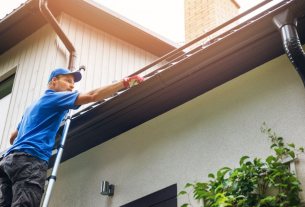The iconic evergreens of the Pacific Northwest are so much more than simply beautiful; they also unknowingly function as freeways right to your door. Carpenter ants love the wet climate of Seattle and the abundance of softwood trees, which means local homeowners are especially at risk.
Given that there are over 158,000 residential properties in Seattle located next door to these nature’s ant magnets, it is critical to understand the relationship for the protection of your investment. When you see piles of sawdust or hear scratching sounds in the walls, it is time to call for Seattle pest control to avoid expensive structural damage getting worse, fast.
How do Trees Attract Carpenter Ants?
- Moisture-Rich Environment Creates Perfect Conditions
The evergreen trees of Seattle stay moist from their 37 inches of annual rain, which is what carpenter ants need to set up their colonies. Carpenter ants do not eat wood like termites; they excavate it in order to create their galleries. For Seattle’s Douglas firs and Western red cedars, it is when the bark holds moisture during the showery weather and morning fog of the Pacific Northwest.
- Decaying Wood Provides Easy Excavation
Of course, carpenter ants like cedar trees: The soft, workable wood from dead branches, storm-damaged limbs, or simply the decay that occurs naturally in Seattle’s mature evergreens. The city’s urban forest, which is around 28% canopy coverage, contains lots of older trees with natural hollows, essentially carpenter ant condominiums. These bugs have the super-sense of sniffing out wood softened by moisture. Thus, the towering evergreens on your property will be their first target for colonization by satellite colonies.
How Ants Move from Trees to Your Home?
The highly treed neighborhoods of Seattle have evergreens on the eaves, making natural bridges for carpenter ants. These industrious insects follow scent trails from their tree colonies right onto your roof, gutters, and siding. Because of the close quarters in which houses in the city sit to each other, an infested tree may potentially infect five houses within a block radius.
Carpenter ants will seek more moisture after their colonies are found in trees, and do so with scout ants. Minor moisture problems have become common around windows, doors, and foundations in Seattle homes due to rain and humidity directly infiltrating the design of these houses. They can smell moisture from surprisingly far off, and a whole colony can move from your beloved evergreens and into the wooden parts of your home–the bathroom subfloors, kitchen cabinets, and basement beams where moisture often collects.
What Makes Carpenter Ant Infestations Tricky?
- DIY Treatments Often Miss the Mark
Most homeowners try to deal with carpenter ants using an over-the-counter spray, killing only the ants that they see. Main colonies could be comfortably deep in your pine trees or already in wall voids, but those surface treatments seldom penetrate to that level. The ants you see in your kitchen are most likely only foragers; the actual colony has thousands of members and is safely out of reach.
- Professional Expertise Makes the Difference
Effective carpenter ant control requires targeting and exterminating the main colony, not simply treating the visible pathways, and United Pest Solutions knows this. Trained professionals use specialized equipment to trace the colonies within tree structures and building materials, followed by the location-based, seasonal treatment that reaches the entire population in your house. They know where to find these hidden colonies all right; they live in Seattle’s unique urban forest environment.
- Structural Damage Develops Slowly but Steadily
Carpenter ants do not destroy wood as rapidly and explosively as termites, but instead they are tunnelling through beams, slowly making them weaker. These colonies can last a long time, so that they can dig deep into your support beams, floor joists, and wall studs. This means what begins as a little aesthetic injury can make your dwelling structurally unstable, and that is why you need an expert to intervene as quickly as possible to defend your investment in your home.




